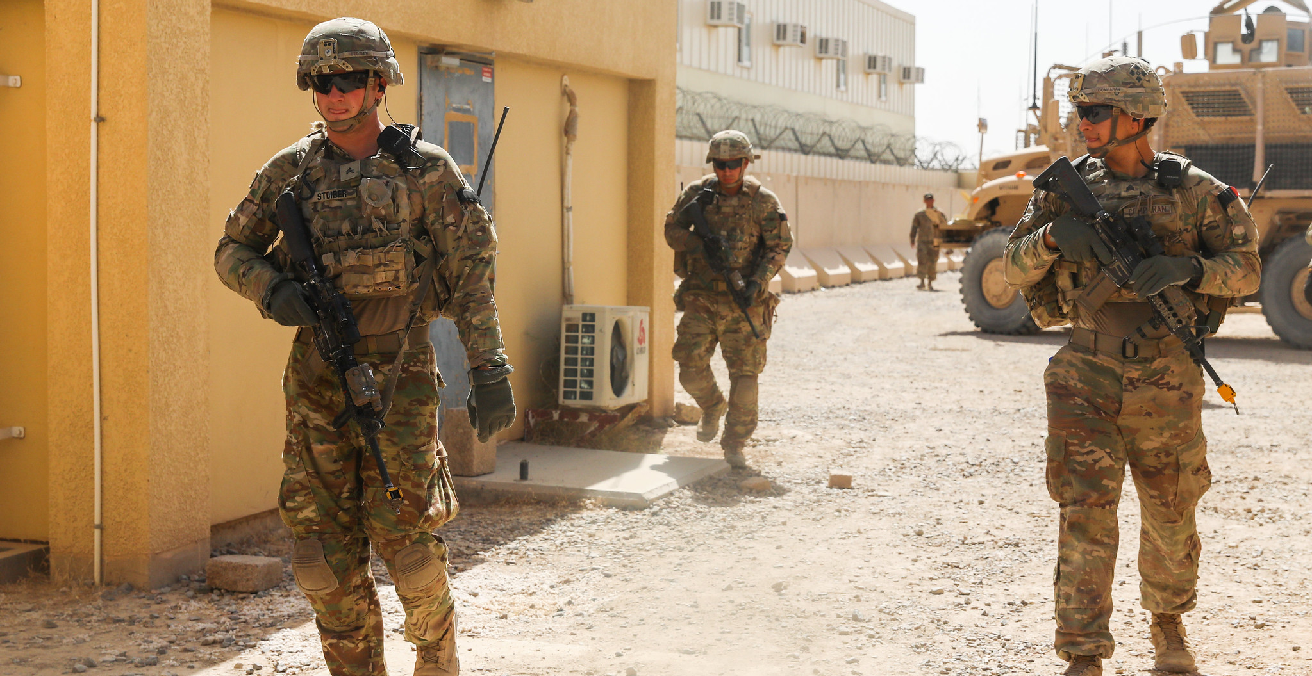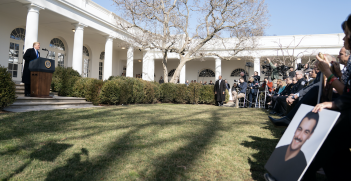Challenges to the Political and Peace Settlement Process in Afghanistan

The past twelve months saw progress towards potential political and peace settlements in Afghanistan. However, this progress is conditional upon further developments in 2021, and attitudes range from cautious optimism to outright pessimism from both Afghan and international stakeholders.
The endgame in Afghanistan is an enduring political settlement that is acceptable to both the Taliban and the “Afghan side,” a composite of government and other Afghan representatives, formed in part to circumvent the Taliban’s refusal to recognise and negotiate with the government itself. That settlement is interdependent with a concurrent peace settlement to end the bitter civil war that has now raged for nineteen years, a conflict which has spanned the lifetime of about half of Afghanistan’s 37 million population.
The three major developments during 2020 which initiated and will largely shape these settlements were the US-Taliban peace agreement (“Agreement for Bringing Peace to Afghanistan”) concluded in Doha on 27 February, the subsequent commencement of the Intra-Afghan negotiations on 12 September, and the Afghanistan donors’ conference held in Geneva on 23-24 November. All are interrelated but are also conditional.
The commencement of intra-Afghan negotiations, initially proposed for 10 March, was one of the conditions within the US-Taliban agreement. However, that agreement, widely viewed as flawed due to its favouring of the Taliban, was struck without Afghan government participation or consultation. Efforts towards conciliation were further complicated by a Taliban/Afghan government prisoner swap, which caused significant contention and delayed the start of intra-Afghan negotiations until September. It then took three months for the parties to agree on negotiation procedures. Consensus on an agenda, now being negotiated, could also take months, suggesting a potential political settlement is unlikely soon.
Reaching any enduring political settlement will be a major challenge due to the fundamentally different expectations of each party. The Afghan side has emphasised they expect to retain the substance of gains made since 2001 – the constitution, democratic elections, and protection of the rights of women, youth, and minorities. Their expectations have been reinforced by statements issued on 24 November within the Afghanistan donors’ conference communique, the EU Commission’s complementary statement, and a separate statement by the top thirteen donors, including Australia, the US, Canada, Japan, and the EU. These statements are explicit about conditions to be met by both the government and Taliban as the basis for continuing foreign aid. These conditions include protecting fundamental freedoms inclusive of the rights of women and minorities, democratic pluralism, the rule of law, respect for international humanitarian law, improved governance, modernisation, counter-narcotics, safety of movement, reduced violence, and prevention of terrorism.
Finding common ground for compromise will be testing. While the Taliban’s long-term expectations are not yet public, they will be modelled, at least partially, on the profile of their former Taliban government, named the Islamic Emirate of Afghanistan, which ruled Afghanistan during 1996-2001. Their demands will include a return to strict Islamic fundamentalism, a more rigid interpretation of sharia law, the rejection of democratic pluralism, and a much more fundamentalist attitude to human rights, especially regarding the rights of women, youth, and ethnic and religious minorities.
Is real compromise possible?
The Taliban are likely to make short term compromises to legitimise their role in government, but without compromising their long-term goal to reestablish an Islamic Emirate. Initially, they might agree to, or even to promote, the appointment of interim governments at the national, province, and district levels, whereby they would assume an official governing role in districts and provinces they already control. Various scenarios exist as to how they might then seek to further consolidate and expand control, including through exploiting any electoral process.
The Taliban are experienced and tough negotiators. The Afghan side are well aware of this and know their tactics which, they assume, will include attempts to leverage time and violence to their advantage.
Is an enduring peace settlement possible?
Developments to date are not encouraging. The core of the US-Taliban agreement is about a reduction in domestic and foreign-initiated violence, principally insurgency and terrorism. Specifically, it requires the Taliban to guarantee and implement “enforcement measures that will prevent the use of the soil of Afghanistan by any group or individual (including the Taliban itself, al Qaeda, IS-K, and others) against the security of the US and its allies.” The major US offset is a timeline for the full withdrawal of US and allied (including Australian) forces by May 2021.
This agreement is skewed in the Taliban’s favour due to President Trump’s haste to end, or at least initiate the ending, of this “endless war” before last November’s presidential elections. The Taliban played him accordingly, with their only readily quantifiable commitment being not to attack US or allied forces. To the dismay of many stakeholders, the agreement omits any universal ceasefire or condition that explicitly requires a reduction in the high levels of Taliban violence against Afghan targets, being the Afghan National Defense and Security Forces (ANDSF), government officials, or civilian targets. US officials claim while this was not explicit, it was implicit.
While the major US obligation under the agreement requires only one interim downsizing of US forces, from 12,600 to 8,600 by last July, before full withdrawal this May – all being conditional on the Taliban meeting their obligations – Trump unilaterally drew down US forces to 4,500 in November, and to 2,500 mid-last month. The latter withdrawals occurred despite US military concerns that the Taliban had breached their obligations. The 2020 third-quarter report by the US Special Inspector General for Afghan Reconstruction (SIGAR) quotes the commander of US Forces Afghanistan, General Austin Miller, as saying on 12 October that Taliban violence “is not consistent with the US/Taliban agreement and undermines the ongoing Afghan peace talks.”
The Taliban have not attacked US or allied forces since signing the agreement in February, and therefore, dismissed allegations of any breach. But they have consistently increased their level of violence against Afghan targets since then. While few statistics are publicly available, SIGAR also quotes President Ashraf Ghani as stating in August that 12,279 Afghan security forces and civilians had been killed or wounded by the Taliban since February, a significantly higher number than the previous year. Also in August, the Inspector General for Operation Freedom’s Sentinel 1 (IGOFS) reported that “the Taliban continued to support Al Qaeda, and conducted joint attacks with Al Qaeda members against the ANDSF” – a blatant breach of the agreement.
There are two key questions if all US and allied forces withdraw in May. This first is whether, upon withdrawal, the Taliban would then seriously intensify the civil war to expand their control and influence. The second is whether the ANDSF now have the capability to successfully counter such an intense and sustained Taliban campaign without the support of US forces. I suggest the answers are yes and no, respectively.
The Biden administration is now formally reviewing Taliban compliance with their commitments, and the policy implications if not. A total withdrawal of US and allied forces, and its related implications on the settlement process, hangs in the balance pending that review.
Ian Dudgeon is a presidential associate of the AIIA and former ACT branch president.
This article is published under a Creative Commons Licence and may be republished with attribution.





